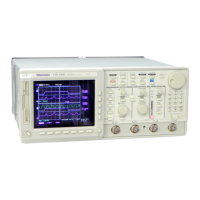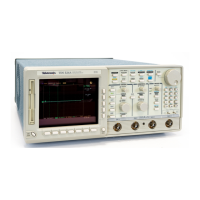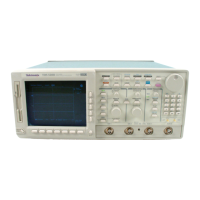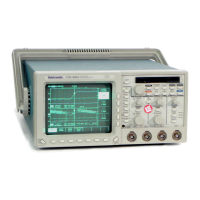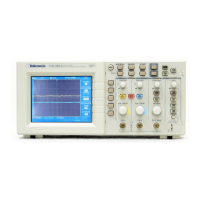Specifications
2–4
TDS 500B, TDS 600B & TDS 700A Performance Verification and Specifications
Table 2–2: Record Length and Divisions per Record vs. TDS Model
Divisions per Record
Mod
s
o
d
Length
FTS
1
Off
2
FTS
1
On
3
T
S 500
, T
S600
& T
S 700
500 10 divs 10 divs
d
;
c
nn
p
n 1
qu
pp
d
r n
1000 20 divs 10 divs
p
n 1
qu
pp
d
r n
2500 50 divs 10 divs
5000 100 divs 10 divs
15000 300 divs 15 divs
TDS 500B & TDS 700A, all channels 50000 1,000 divs 10 divs
TDS 500B & TDS 700A, all channels
Option 1M equipped only
75000 1,500 divs 15 divs
TDS 500B & TDS 700A, all channels
Option 1M equipped only
100000 2,000 divs 10 divs
TDS 500B & TDS 700A, all channels
Option 1M equipped only
130000 2,600 divs 13 divs
TDS 520B, TDS 724A & TDS 782A, one
channel only
TDS 540B, TDS 754A & TDS 784A, two
channels only
Option 1M equipped only
250000 5,000 divs 10 divs
TDS 540B, TDS 754A & TDS 784A, one
channel only
Option 1M equipped only
500000 10,000 divs 10 divs
1
Fit to Screen setting
2
Fit to Screen off preserves 50 samples/division in a 1–2–5 sec/division sequence.
3
Fit to Screen on lets the samples/division and the sec/division sequence vary.
4
All channels means all that may be displayed at one time: four channels for some
models, two for others. See Table 2–1 and its footnote on page 2–1.
Trigger System
The triggering system supports a varied set of features for triggering the
signal-acquisition system. Trigger signals recognized include:
H Edge (main- and delayed-trigger systems): This familiar type of triggering is
fully configurable for source, slope, coupling, mode (auto or normal), and
holdoff.

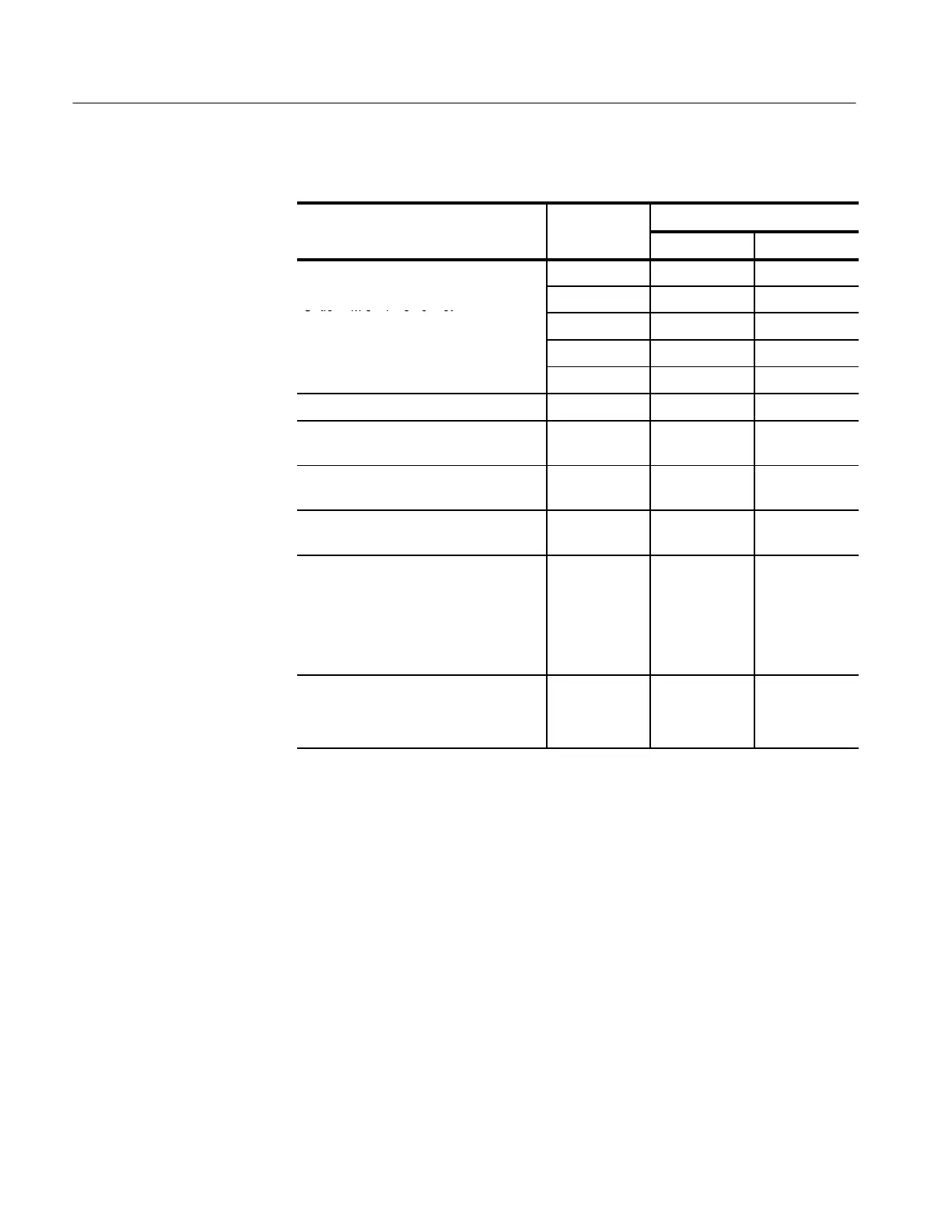